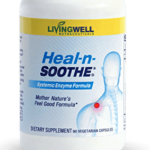Gentle stretching and exercise is beneficial to help decompress and mobilize the spine:
Lower back
You may perform gentle stretching exercises to help move the muscles and connective tissues in the lower back area. In partial inversion, try rotating gently from side-to-side, or slowly rocking your pelvis forward and backward.
Upper back
Many people experience upper back pain as a result of stress and muscle tension. The key to relieving this pain is to totally relax while inverting. Try deep breathing exercises. Also, partner work can be beneficial-nothing is more relaxing than an inverted back and shoulder massage!
Movement is also very beneficial. Try rounding your shoulders forward and pushing them back. Also, stretch one arm at a time across your torso to extend those upper back muscles.
Neck
Again, movement can be beneficial. Try rotating your head from one side to the other. Partner massages to the base of the head and back of the neck are very relaxing (do not apply pressure to the front of the neck). You can also add gentle inverted traction to your neck by resting your arms behind your head at the base of your skull (don’t pull, just add the weight of your arms).
Written By:



